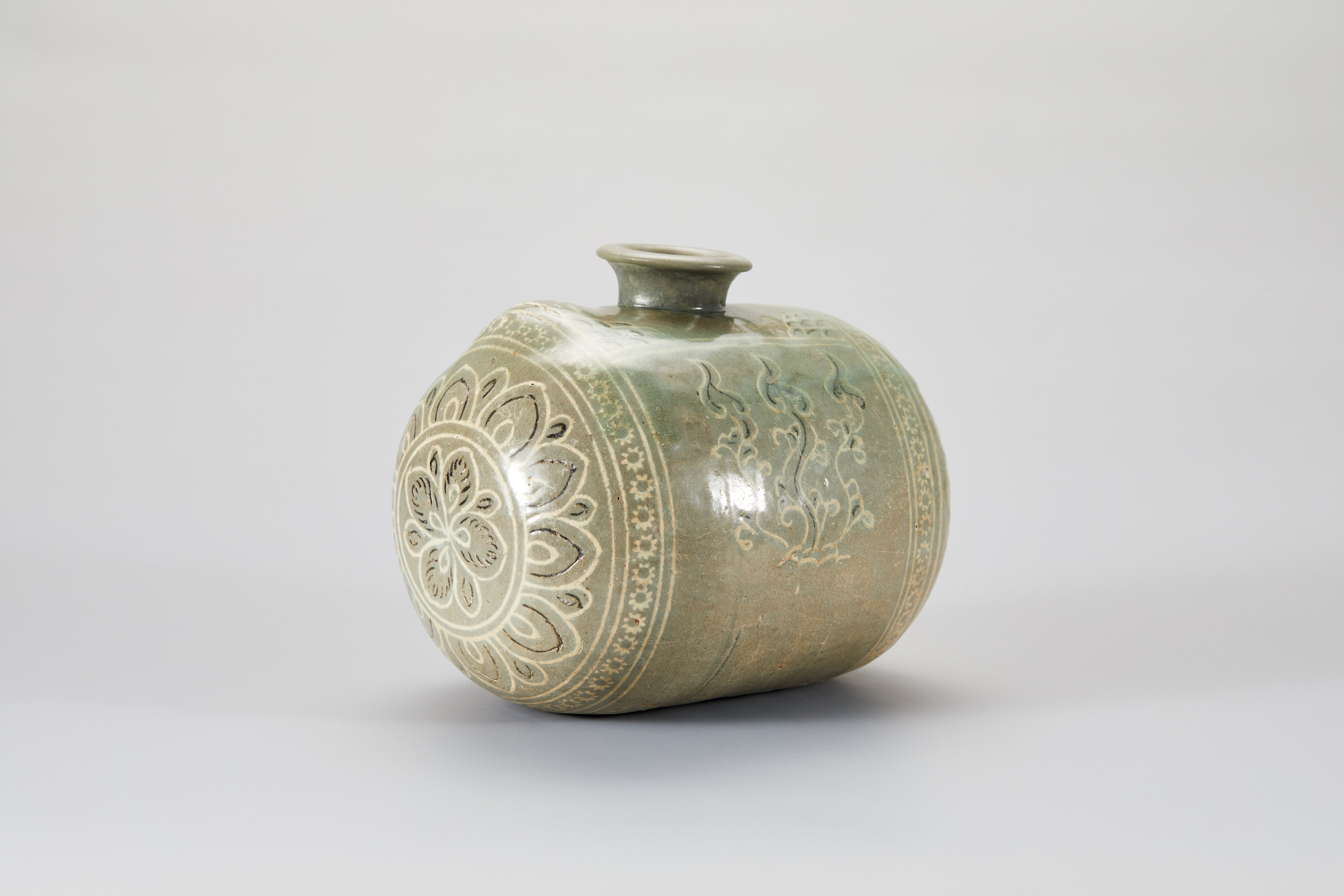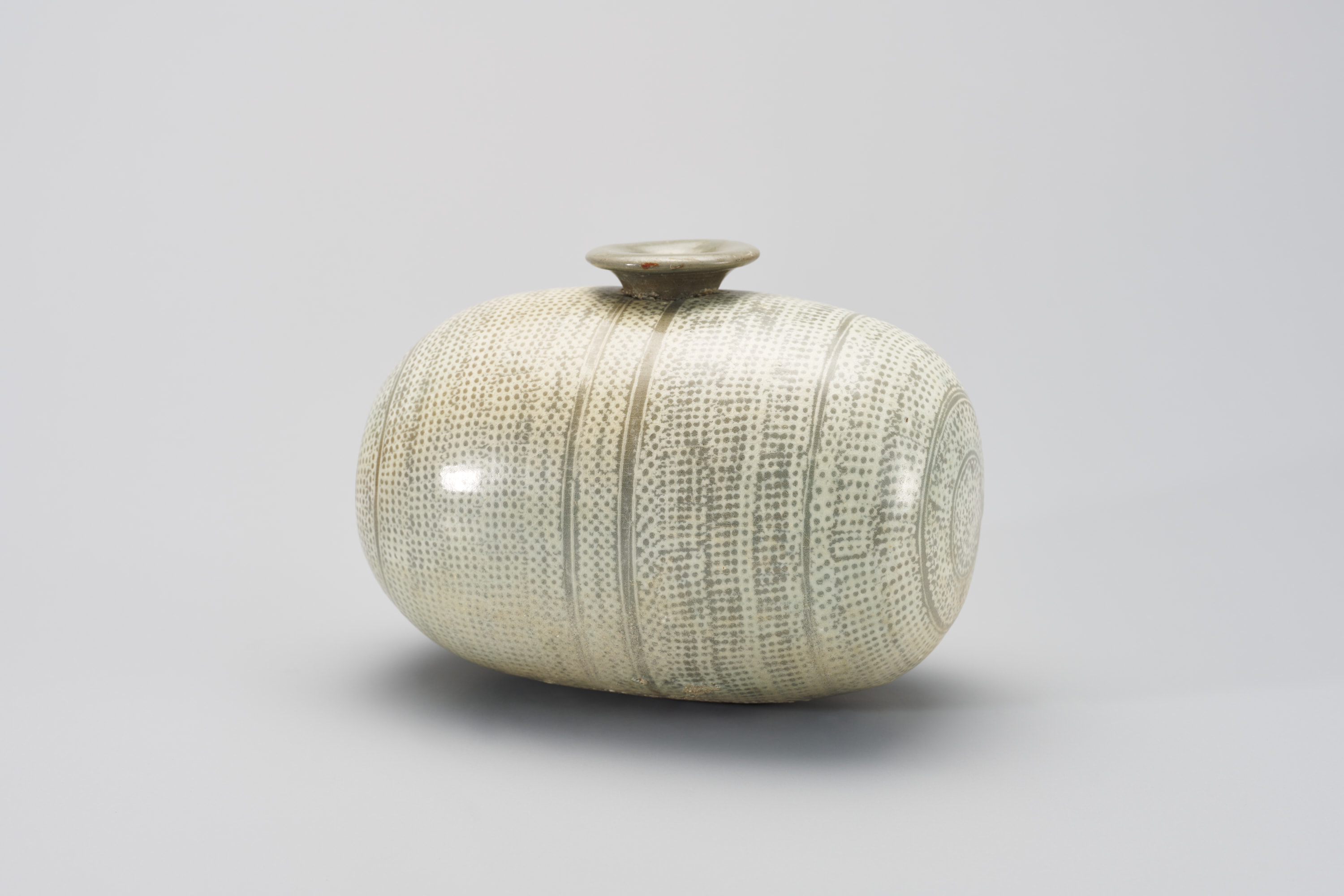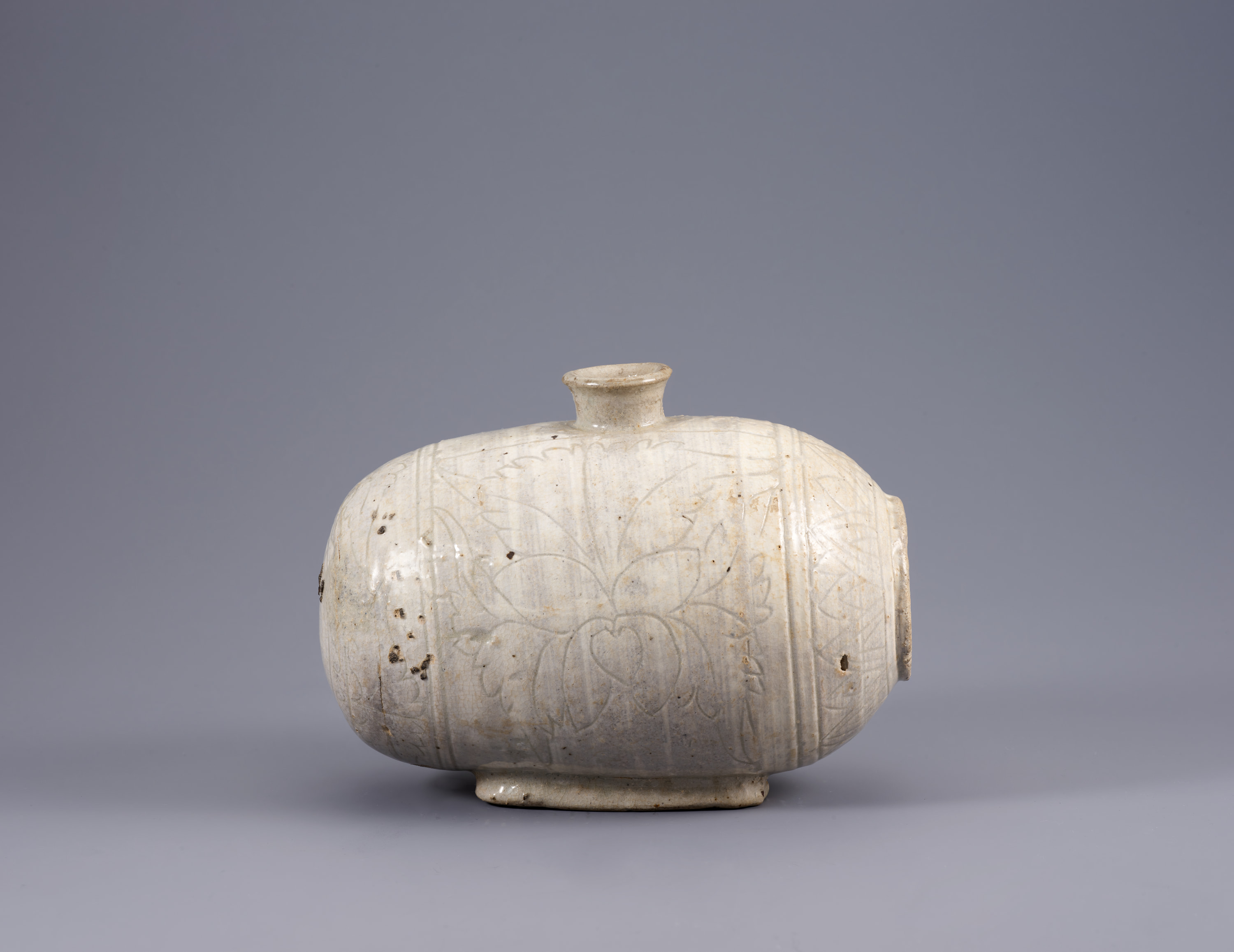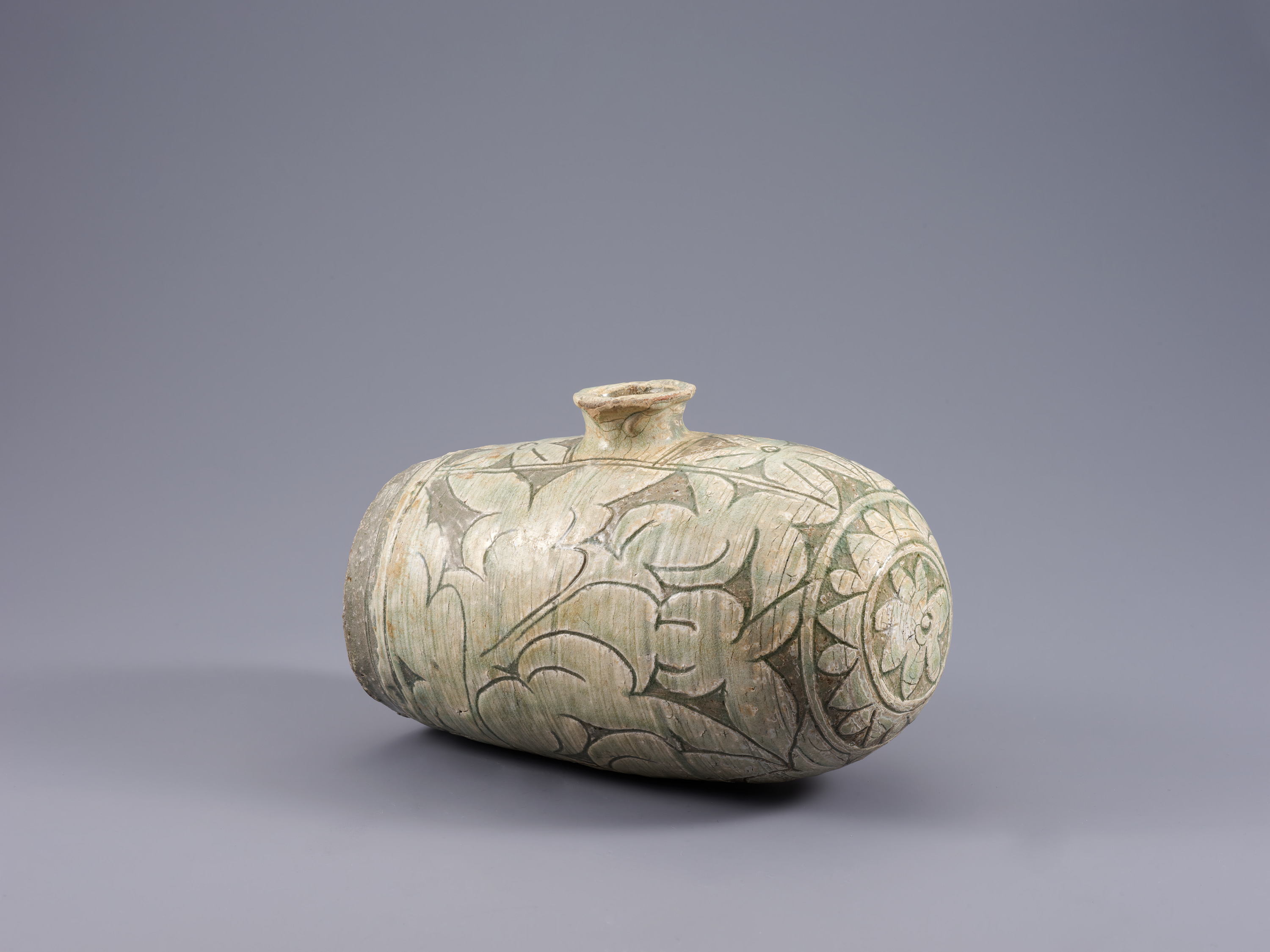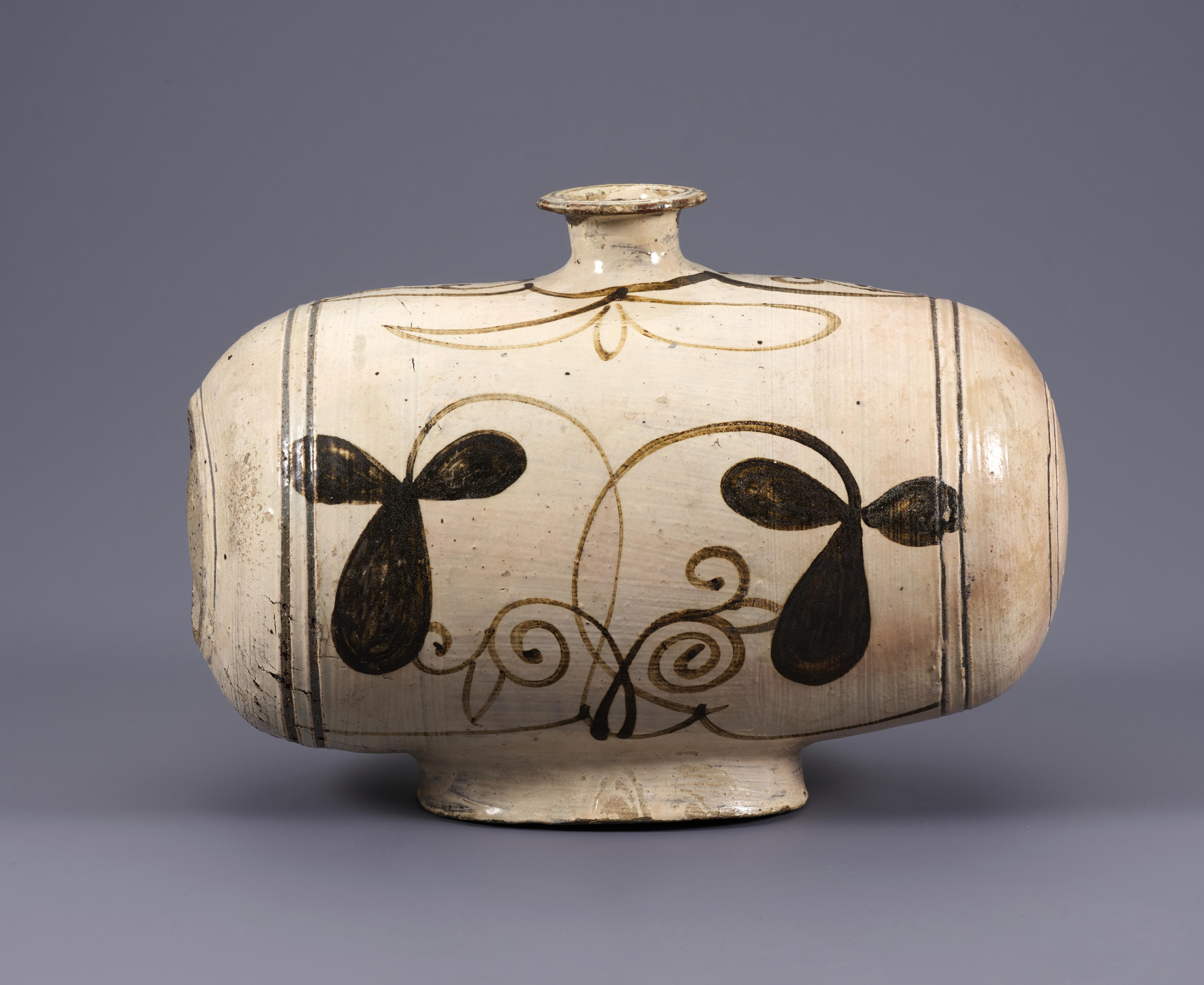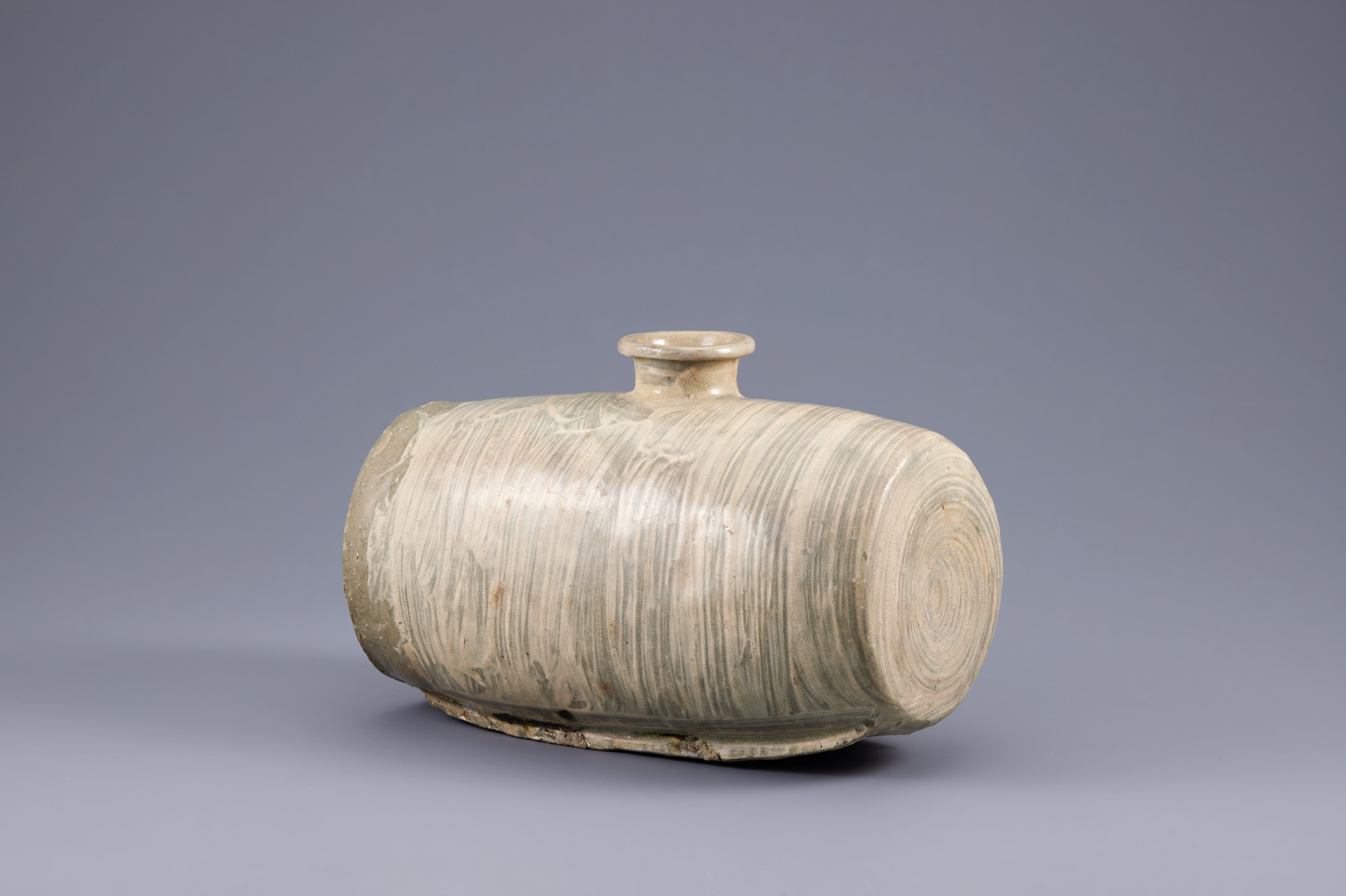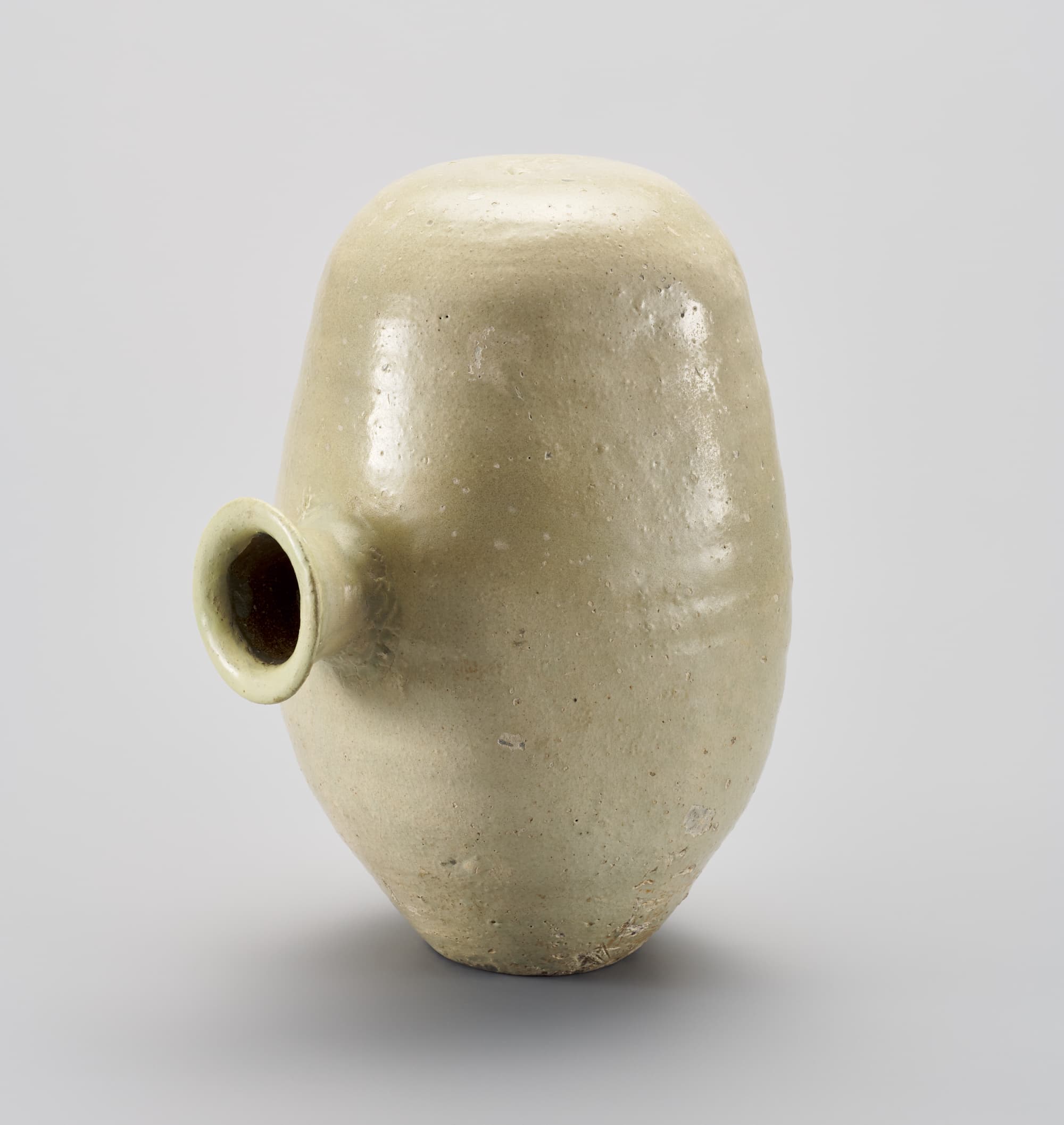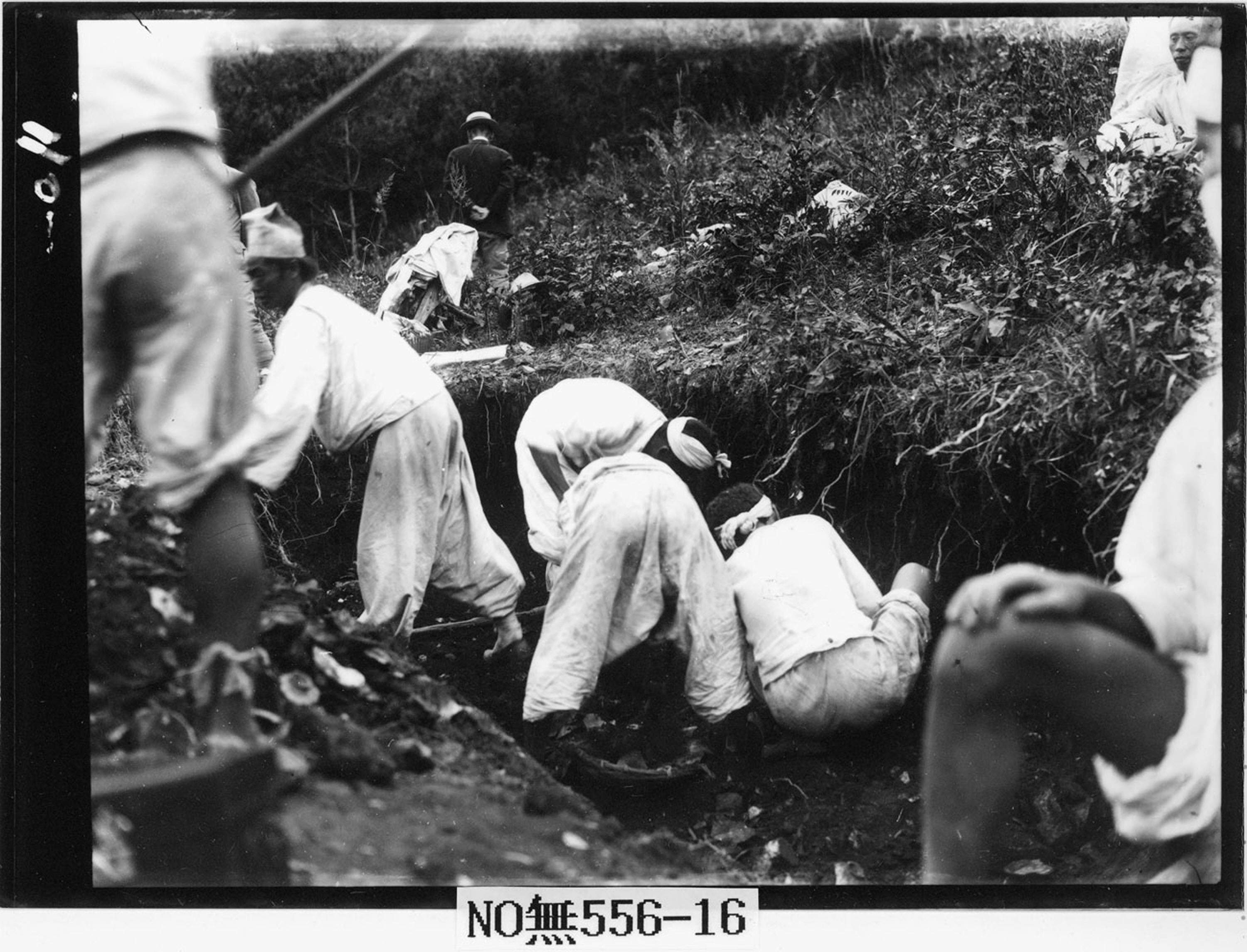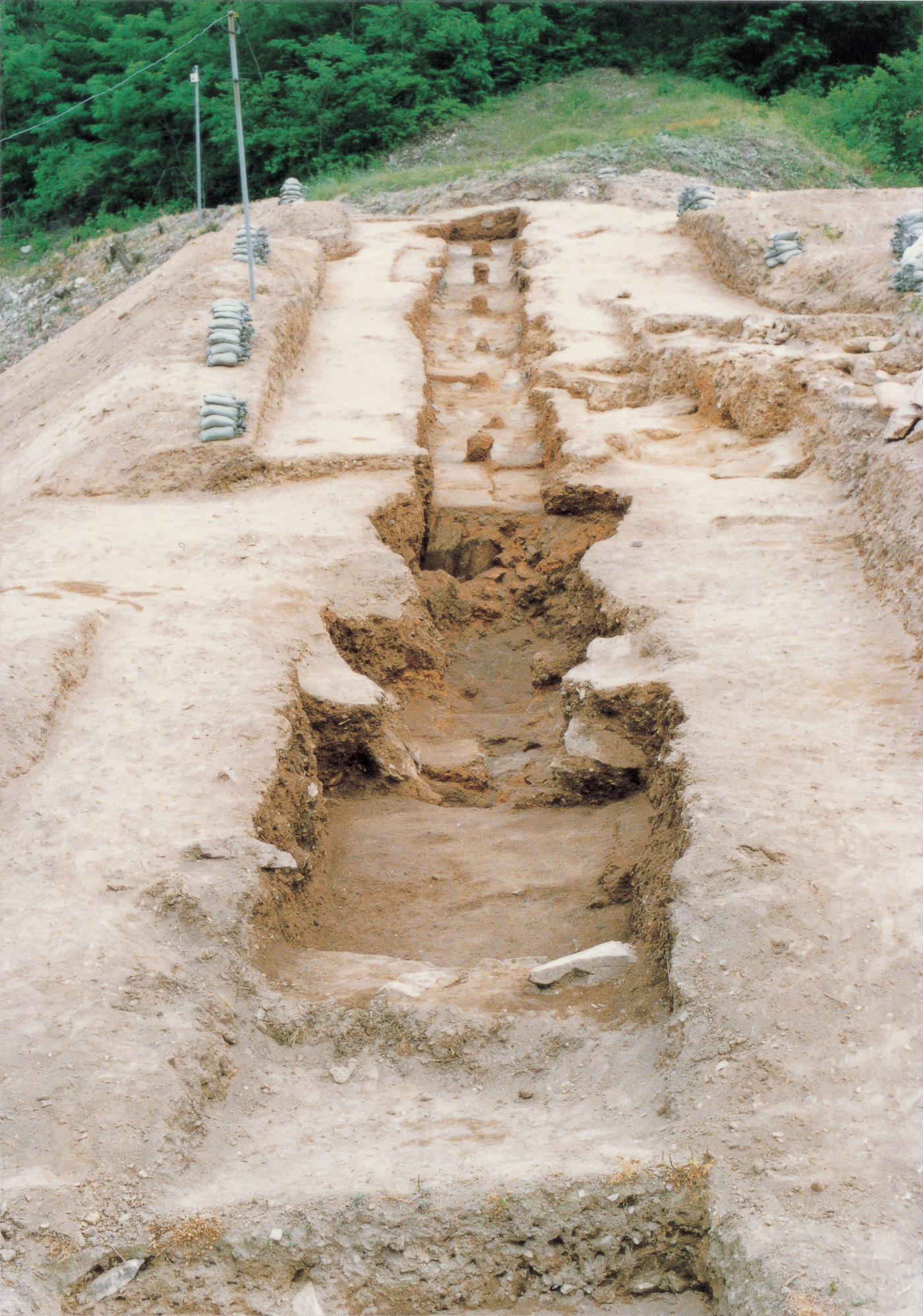Using brushes filled with iron-rich paint, potters during the fifteenth and sixteenth centuries quickly and freely painted intricate designs of fish, flowers, scrolls, and abstract motifs on buncheong ceramics coated with semi-wet white slip (a mixture of white clay and water) (fig. 1). The striking contrast of brownish or reddish patterns against a creamy background is the defining feature of iron-painted buncheong wares, showcasing the mastery of surface decoration among the seven representative styles in buncheong ceramics:
- Inlay: filling an engraved pattern with a different clay
- Stamping: stamping a pattern into semidry clay brushed with white slip
- Incising: incising linear designs into white slip
- Carved-away (sgraffito): carving away the background around the desired pattern
- Iron-painting: painting designs with an iron oxide over white slip but before the application of glaze (underglaze)
- Brushed white slip: loosely brushing white slip onto clay
- Dipped white slip: dipping the vessel in white slip
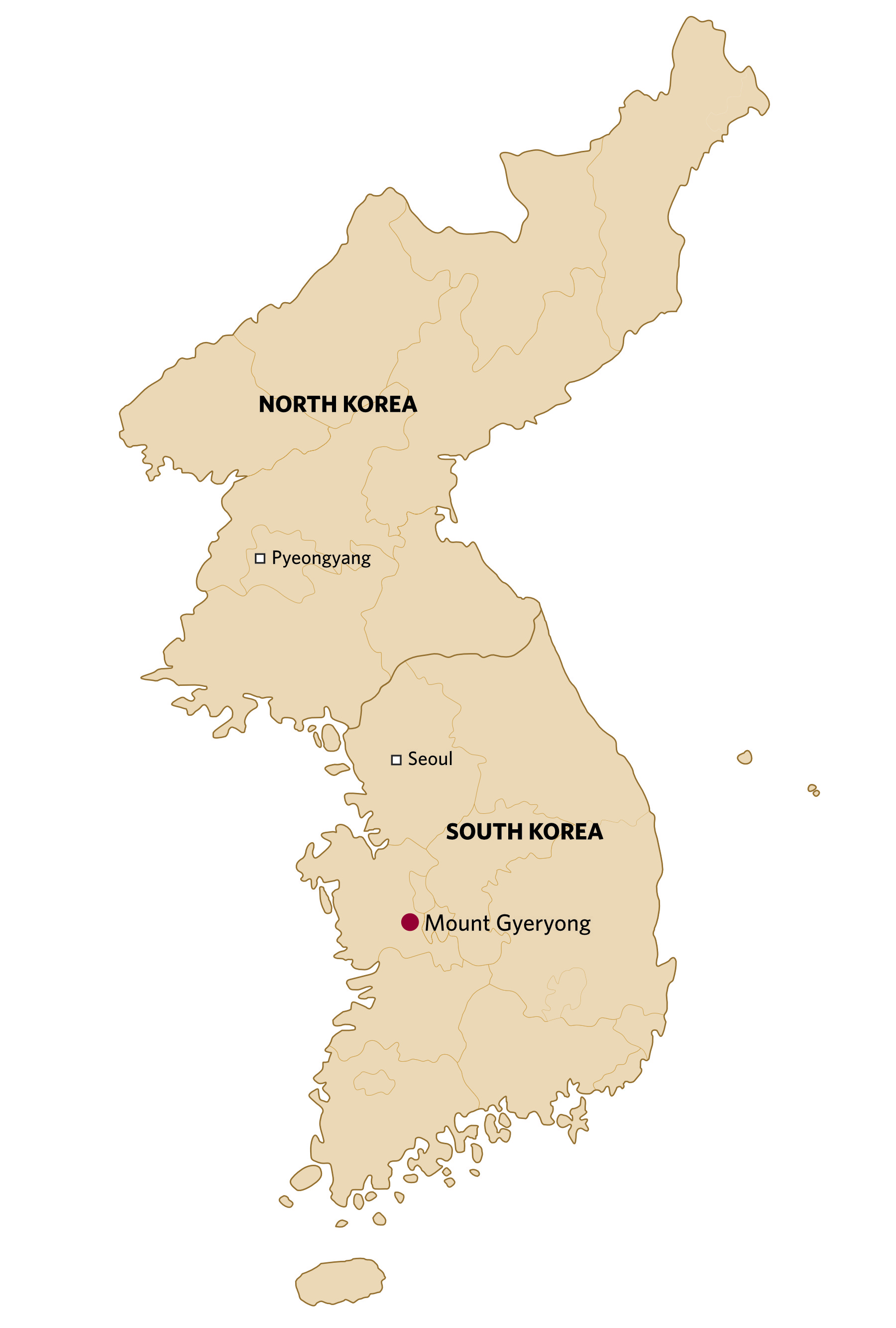
The majority of surviving buncheong wares with iron-painted decoration have been unearthed from kilns located around Mount Gyeryong in South Chungcheong province (fig. 2). The Gyeryong mountain region holds immense historical significance, as it was first chosen by King Taejo (1335–1408, reigned 1392–98) of the Joseon dynasty (1392–1897) as the capital for the new dynasty in 1393.1 However, that same year, Hanyang, now known as Seoul, was ultimately selected as the capital.2
Kilns dating back to the Joseon dynasty in the Gyeryong mountain region were initially discovered in 1927 during the Japanese colonial period (1910–45) (fig. 3). Nearly six and a half decades later, in 1992, the Ho-Am Art Museum and the National Museum of Korea conducted thorough excavations of several kilns in the area, utilizing modern and professional methods (fig. 4). Ongoing excavations have continued to unearth valuable artifacts, with the majority consisting of buncheong wares. Additionally, these excavations have yielded other types of ceramics, including early whiteware and black wares.
Despite being created 500 to 600 years ago, buncheong wares with the iron painting technique still pose several intriguing and unresolved questions. One of the primary enigmas is why the buncheong wares from the Gyeryong region predominantly feature the iron painting technique. Some speculate that the abundance of iron-rich pigments in the area might have played a significant role in the preference.
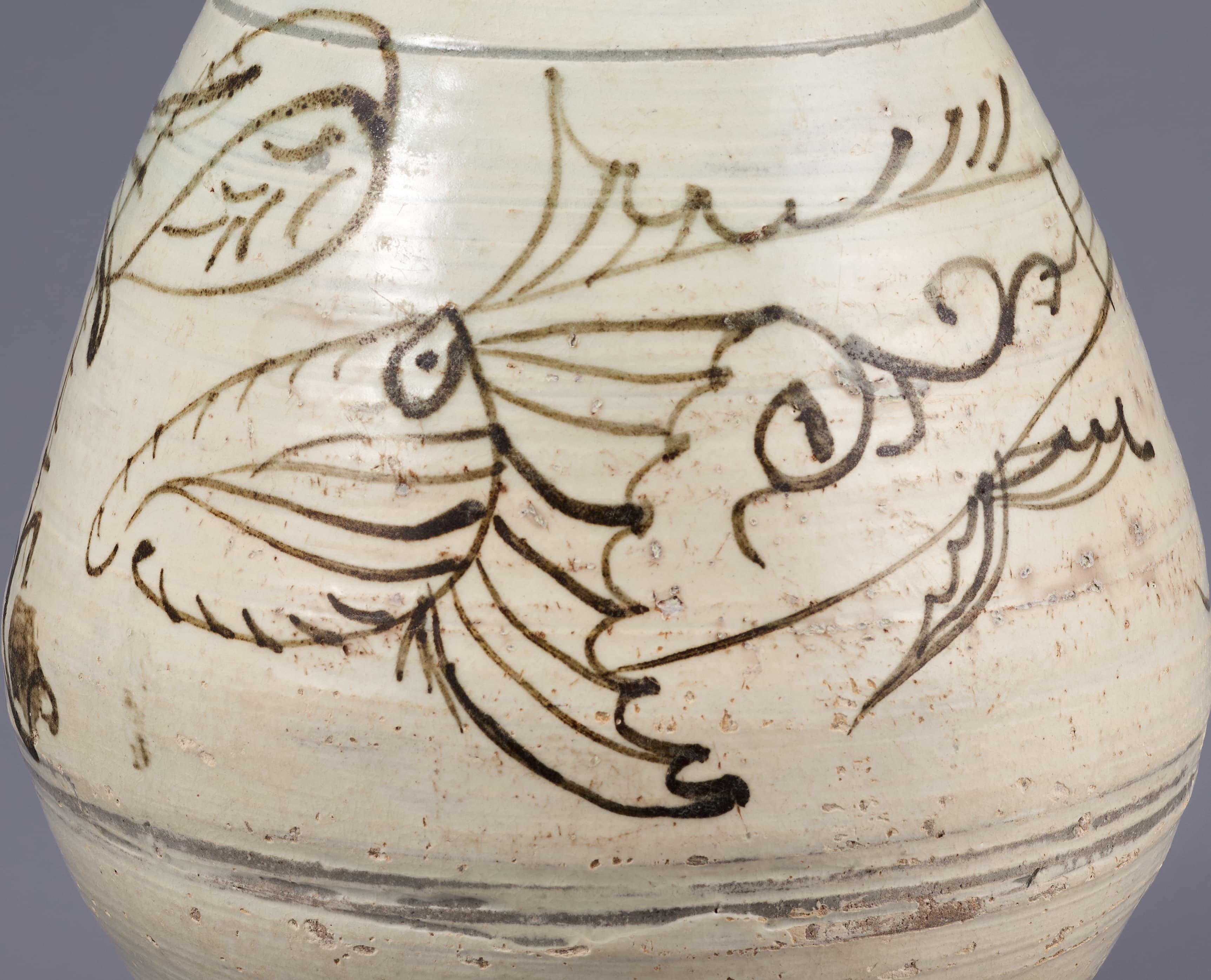
Another intriguing query revolves around the prevalent motif of fish on the buncheong wares from the mountain region, despite its distance from the sea (fig. 5). Some scholars assume that these fish might represent river fish while others draw connections to fish symbolism found in East Asian art. However, no definitive consensus has been reached among scholars. The unanswered questions surrounding these ceramics enhance their allure to researchers, collectors, and viewers alike.
HKH
Notes
-
The Annal of Taejo 3, in The Annals of the Joseon Dynasty [in Korean] (1393): 6a–b, https://sillok.history.go.kr/popup/viewer.do;jsessionid=4E61B8EB9CE78E0624A8040061EC5D46?id=kaa_10203024_001&type=view&reSearchWords=&reSearchWords_ime=#.↑︎
-
Presently, key governmental administrations have been relocated to Sejong, near the Gyeryong mountain, forming a significant municipal administration area.↑︎
